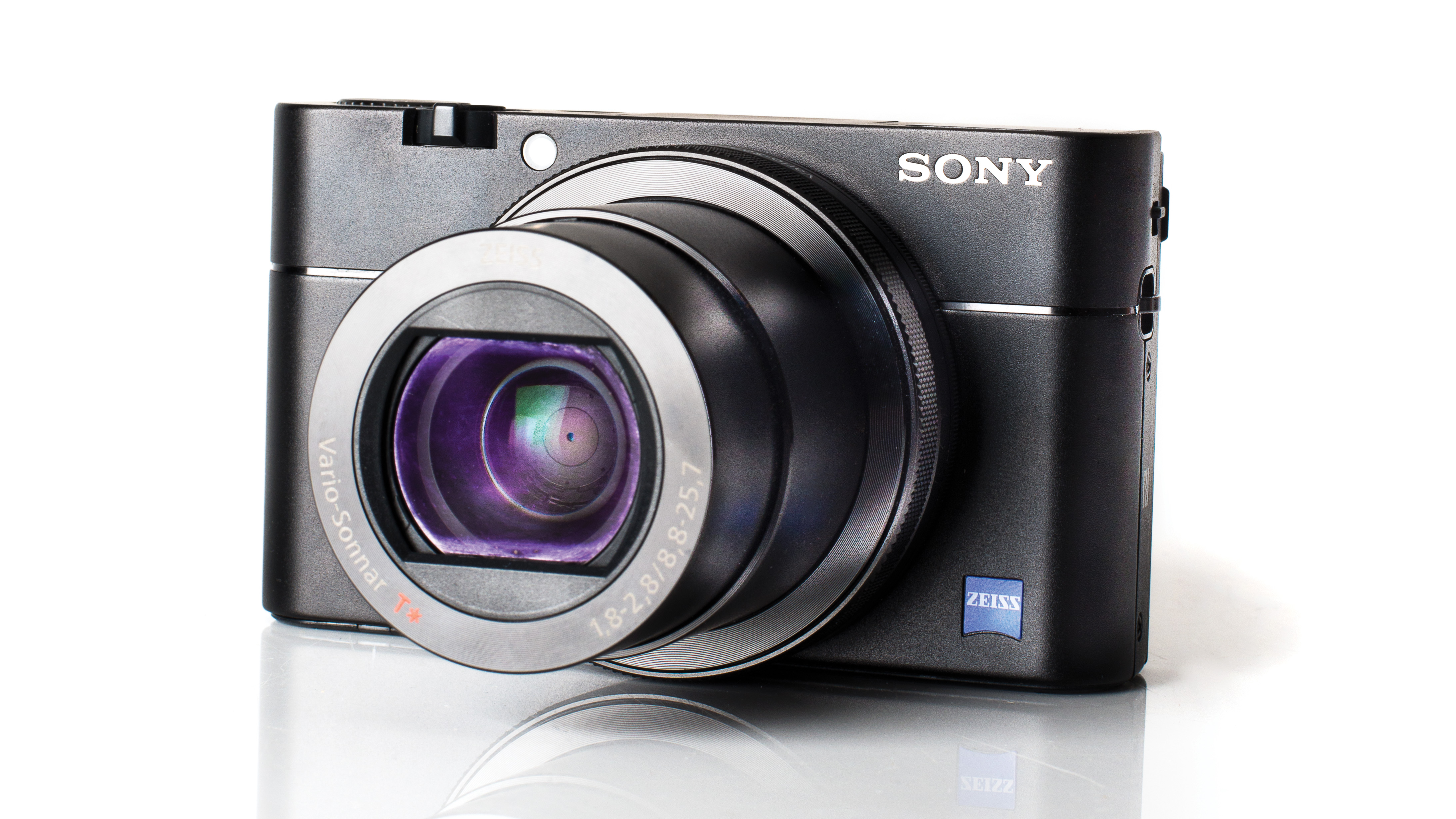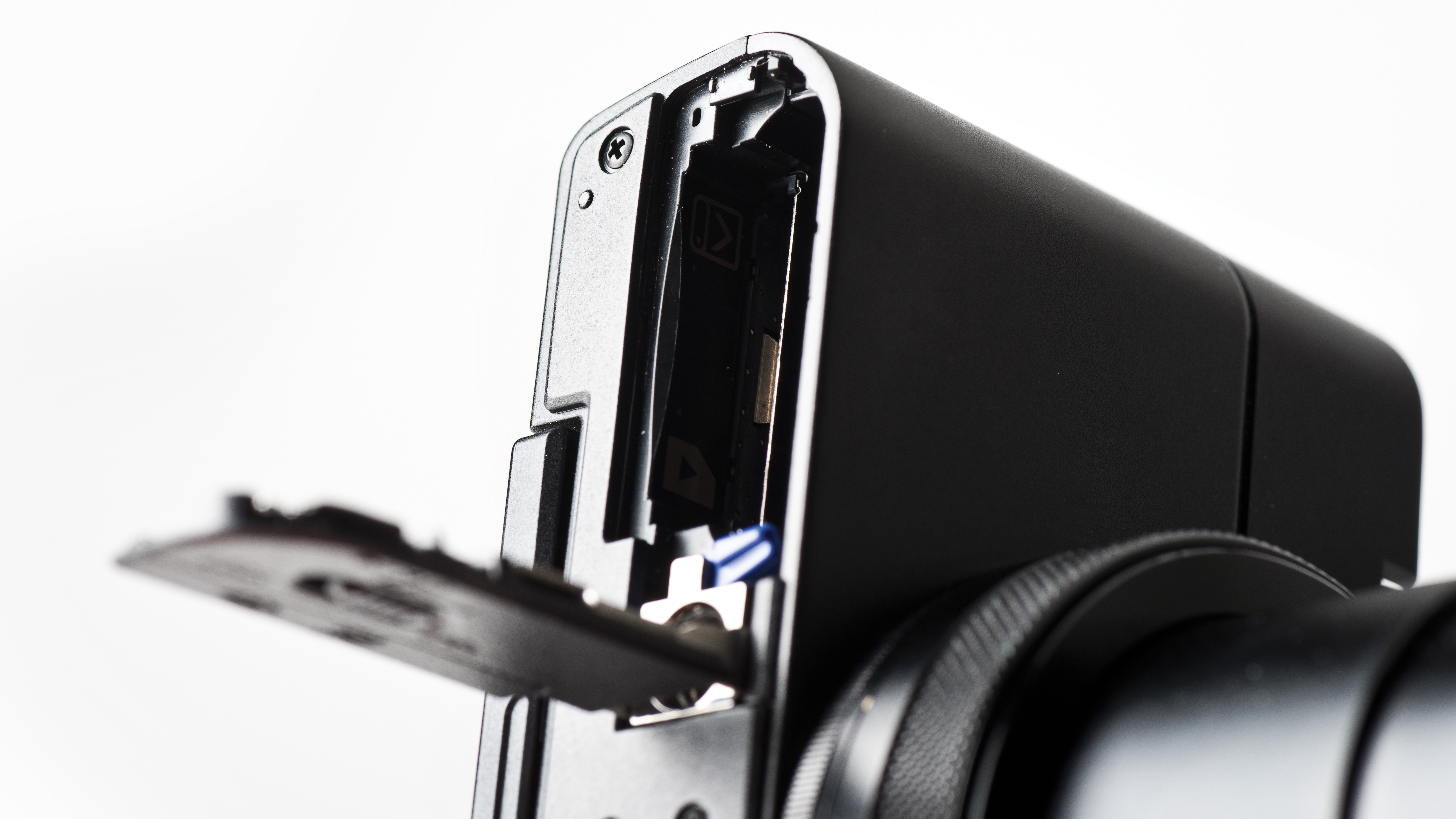Digital Camera World Verdict
Launched way back in 2016, this premium compact camera is still going strong. Confusingly several generations of the RX100 are available - with this being the fifth of seven generations of this compact camera. The appeal is that it has a reasonably sizes Type-1 sensor, and it has distinctive pop-up electronic viewfinder which many users love.
Pros
- +
Pop-up electronic viewfinder
- +
315 autofocus detection points
Cons
- -
No touchscreen
Why you can trust Digital Camera World
Externally the Sony Cyber-shot DSC-RX100 VV is an unassuming compact camera, but pick it up and its solid metal-bodied build becomes apparent. Its price tag hints that it’s a bit more than the average pocket-sized camera.
Inside the Mark V is a one-inch type Exmor RS CMOS sensor with 20.1 million pixels. The sensor’s stacked construction means the signal from the photosites (aka pixels) has less distance to travel, enabling a faster read-out speed. A DRAM chip and newly developed front-end LSI that supports the BIONZ X processing engine also enables 4K video, and a phenomenal maximum stills shooting speed of 24fps at full resolution with continuous autofocusing and metering for up to 150 shots.
This impressive shooting rate is backed up by a top shutter speed of 1/32,000sec using the electronic shutter (the mechanical shutter maxes out at 1/2,000sec), a hybrid autofocus system with 315 phase-detection points and a claimed response time of 0.05sec. While we can’t verify that time, the RX100 V certainly gets subjects sharp quickly and does a great job of tracking moving targets in reasonable light. It’s more hesitant in low light, but it’s still very good for a compact camera.
It is worth pointing out that there are multiple generations of the RX100 - severalof which are still on sale. Check out our Sony RX100 III vs RX100 IV vs RX100 V vs RX100 VI vs RX100 VII comparison to see the subtle differences between them all.
Specifications
Sony product number: DSC-RX100M5
Sensor: 20.1MP 1.0-type (13.2mm x 8.8mm) Exmor RS CMOS sensor
Lens: 24-70mm f/1.8 - f/2.8
AF points: 315 points phase AF, 25-point contrast AF
ISO range: 125 to 12,800
Max image size: 5,472×3,648
Metering modes: Multi-pattern, center-weighted, spot, average, highlight
Video: 4K UHD at 30p, 24p
Viewfinder: Pop-up EVF, 2.36m dots
Memory card: SD/SDHC/SDXC (UHS I)
LCD: 3-inch tilting touchscreen, 1,228k dots
Max burst: 20fps (90fps short burst mode)
Connectivity: Wi-Fi, Bluetooth
Size: 101.6 x 58.1 x 41mm
Weight: 272g
Build and handling
In addition to the high-quality, three-inch 1,228,800-dot tilting LCD screen on the back of the camera, there’s a built-in 0.39-inch OLED electronic viewfinder with 2,359,296 dots. This pops-up smartly with the flick of a switch but its rear element needs to be pulled out manually to give a focused view. That last stage seems a little unsophisticated, but the viewfinder works well, giving a nice, clear view that’s especially useful in very bright light or when panning with a moving subject.
A HFR (High Frame Rate) mode, selected via the mode dial, allows you to shoot Full HD video at one of three frame rates (250, 500 or 1,000fps) for slow-motion playback. While it produces some excellent results, the interface is rather confusing for first-time users.
The best camera deals, reviews, product advice, and unmissable photography news, direct to your inbox!
Like its doppelgänger the RX100 IV, the RX100 V is delightfully compact with understated charm, but its front is smooth and slippery making it a nervous hold and a wrist strap or similar is recommended. Thankfully, Sony offers an optional rubber grip (AG-R2 for £14/$15) that can be stuck on.
One disappointment with the RX100 V is that Sony continues to shun a touchscreen. This would make some setting selections (including AF point) a little easier and more intuitive. By default, the AF point is set by pressing the button at the navigation pad and then using the navigation controls. If you want to use the navigation buttons to reach their other designated functions, you need to press the center button to deactivate AF point selection.
Performance
As the RX100 V has the same pixel count as its predecessor, its images aren’t a revelation in terms of detail resolution, but it’s still impressive for this type of camera. Noise is also controlled well to around ISO 3200. Above this value RAW files show their benefit by producing slightly more natural-looking images and giving control over noise visibility. As a guide, try to stick to ISO 6400 or lower.
In the default settings the RX100 V produces pleasant colors and it generally handles exposure well, while dynamic range is good. Occasionally you may need to use the exposure compensation control to protect highlights, but that’s to be expected.
Verdict

Read more:
• We think these are the best Sony cameras right now
• Which are the best compact cameras on the market?
• Looking for the best camera for vlogging? Start here!
Angela has been testing camera gear from all the major manufacturers since January 2004 and has been Amateur Photographer’s Technical Editor and Head of Testing for Future Publishing’s photography portfolio (Digital Camera Magazine, PhotoPlus: The Canon Magazine, N-Photo, Practical Photoshop, Photography Week and Professional Photography magazines, as well as the Digital Camera World and TechRadar websites). She is the founder of SheClicks - a community group that encourages and supports female photographers.








